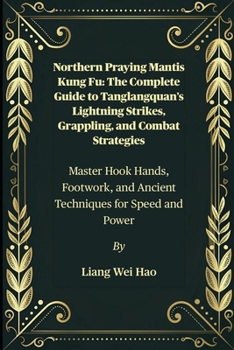Northern Praying Mantis Kung Fu: The Complete Guide to Tanglangquan's Lightning Strikes, Grappling, and Combat Strategies: Master Hook Hands, Footwork
This comprehensive guide explores the traditional Chinese martial art known for its lightning-fast strikes, clever grappling techniques, and practical combat strategies. Developed centuries ago through careful observation of nature and tested in real confrontations, the system combines aggressive attacks with sophisticated defensive manoeuvres. The book breaks down fundamental elements including unique hook hand techniques, mobile stances, and specialised footwork patterns that give the style its distinctive character. Historical context throughout the chapters shows how training methods evolved to address different combat scenarios across various time periods.
Detailed instructions cover essential training methods for developing explosive power, quick reflexes, and effective body mechanics. The material progresses from basic movements to advanced applications, showing how techniques work in actual fighting situations. Special attention is given to close-range combat skills including limb control, rapid counterattacks, and strategies for handling multiple opponents. Traditional forms are analyzed not as performance routines but as encoded combat knowledge, with clear explanations for practical use.
The book emphasises realistic training approaches that bridge the gap between theory and practical application. It includes progressive sparring methods, sensitivity drills, and conditioning exercises that have been used for generations to develop fighting ability. Mental aspects of training receive equal focus, with time-tested methods for maintaining calm awareness during combat. The material stays true to the art's roots while addressing modern training needs and safety considerations.
What sets this guide apart is its thorough exploration of how all components fit together into a complete fighting system. From foundational techniques to sophisticated combat strategies, the content shows the logical progression of skills that made this martial art effective. The writing avoids exaggeration, presenting the art as it was traditionally practiced - a practical method for self-defense that also cultivates discipline and physical mastery. Historical accounts and traditional training principles support the technical instruction, offering readers both the "how" and "why" behind the techniques.





